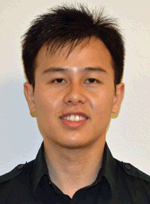New system for detecting, mapping, monitoring, quantifying and reporting fugitive gas emissions
Tracy R. Tsai A C , Kendrick Du A and Bill Stavropoulos BA Picarro Inc., 3105 Patrick Henry Drive, Santa Clara, CA 95054, USA.
B SGS, 59 Bancroft Road, Pinkenba, Qld 4008, Australia.
C Corresponding author. Email: ttsai@picarro.com
The APPEA Journal 57(2) 561-566 https://doi.org/10.1071/AJ16098
Accepted: 9 March 2017 Published: 29 May 2017
Abstract
Coal seam gas (CSG) is an abundant energy source that’s been portrayed as having a lower Greenhouse Gas footprint than coal, but there have been concerns that fugitive emissions may be larger than estimated. Fugitive emissions associated with CSG development are engineered release points (valves and vents etc.) and unintentional equipment leaks. Various gas detection technologies are utilised across the industry that are effective at detecting large emissions sources in close proximity, but they are difficult to scale up to the large size needed for the CSG industry. We’ll present a summary of a trial utilising a new mobile methane detection and emission quantification system: the Picarro EQ (Emissions Quantification). After driving this instrument around CSG infrastructure, Picarro’s cloud-based analytics generate a map of methane measurements and emissions with wind indicators pointing to likely sources. Since all measurements are on a secure cloud-based service, any authorised operator can log into it to run reports and analytics. This system has been used to make measurements in the Barnett Shale, United States. We present results and demonstrate its usage within an operational CSG area to quantify and identify emissions from CSG infrastructure.
Keywords: environment, greenhouse, lasers, technology.

Tracy R. Tsai has almost 10 years of experience in developing laser-based trace gas sensors. After she received a Bachelor of Science from Rice University in Applied Physics and a PhD in Electrical Engineering in Princeton, she started work on methane emissions quantification at Picarro as a Systems Engineer. With that technology, she has measured methane emissions from natural gas sites in Utah, Colorado, California, Texas and Queensland in over 10 field campaigns in collaborations with the National Oceanic and Atmospheric Administration (NOAA), Environmental Protection Agency (EPA), Environmental Defence Fund (EDF), CSIRO and scientists from Stanford, NASA, and Boston University. |

Kendrick Du studied at the University of California, Irvine and graduated with a Bachelor of Science in Earth System Sciences. Soon after graduation, he started his professional career as a Field Technician at Picarro where he’s performed field campaigns with NYSEARCH (United States North-east Gas Association’s Research Development program) and natural gas companies in New York and California. Kendrick is currently at Picarro as a Field Technician Supervisor. |

Bill Stavropoulos has over 35 years of experience in environmental, industrial and occupational sampling and analysis. This includes particular expertise in low level ambient air, soil gas flux emission and fugitive emission measurement. He has participated and presented on these subjects at numerous conferences and workshops in Australia and overseas and been involved in several technical committees which have produced industry standards. |
References
Alvarez, A. A., Pacala, S. W., Winebrake, J. J., Chameides, W. L., and Hamburg, S. P. (2012). Greater focus needed on methane leakage from natural gas infrastructure. Proceedings of the National Academy of Sciences of the United States of America 109, 6435–6440.| Greater focus needed on methane leakage from natural gas infrastructure.Crossref | GoogleScholarGoogle Scholar |
Ball, A. (2015). ‘Australian Energy Update 2015.’ (Australia Government Department of Industry and Science: Canberra, ACT.)
Crosson, E. R. (2008). A cavity ring-down analyzer for measuring atmospheric levels of methane, carbon dioxide, and water vapor. Applied Physics. B, Lasers and Optics 92, 403–408.
| A cavity ring-down analyzer for measuring atmospheric levels of methane, carbon dioxide, and water vapor.Crossref | GoogleScholarGoogle Scholar |
Day, S., Dell’Amico, M., Fry, R., and Tousi, H. J. (2014). Field measurements of fugitive emissions from equipment and well casings in Australian coal seam gas production facilities. Department of the Environment and Energy. Available at http://www.environment.gov.au/climate-change/greenhouse-gas-measurement/publications/csg-fugitive-emissions%20 [Verified 21 March 2017].
Kirchgessner, D. A., Lott, R. A., Cowgill, R. M., Harrison, M. R., and Shires, T. M. (1997). Estimate of methane emissions from the U.S. natural gas industry. Chemosphere 35, 1365–1390.
| Estimate of methane emissions from the U.S. natural gas industry.Crossref | GoogleScholarGoogle Scholar |
Rella, C. W., Tsai, T. R., Botkin, C. G., Crosson, E. R., and Steele, D. (2015). Measuring emissions from oil and natural gas well pads using the mobile flux plane technique. Environmental Science & Technology 49, 4742–4748.
| Measuring emissions from oil and natural gas well pads using the mobile flux plane technique.Crossref | GoogleScholarGoogle Scholar |
Wigley, T. (2011). Coal to gas: the influence of methane leakage. Climatic Change 108, 601–608.
| Coal to gas: the influence of methane leakage.Crossref | GoogleScholarGoogle Scholar |


